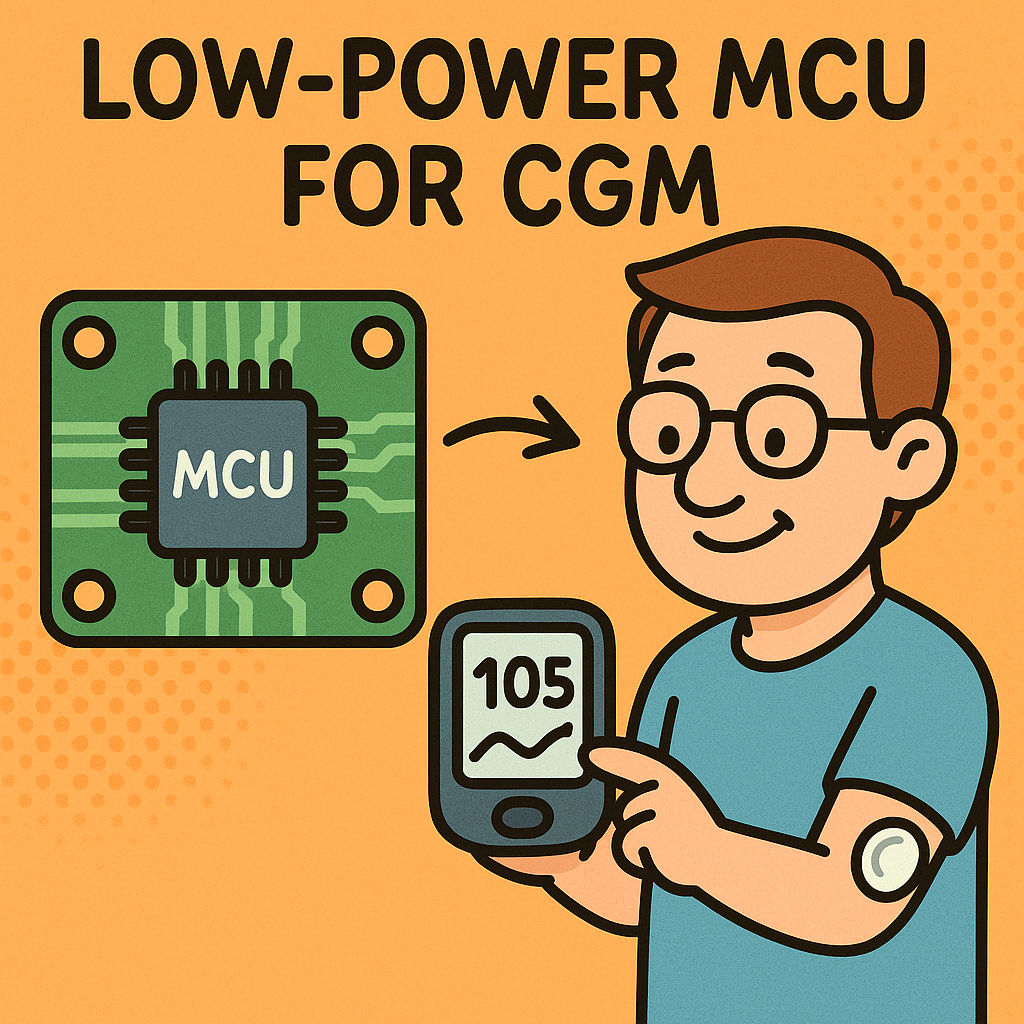Understanding the Need for Low-Power MCU Architectures
Continuous Glucose Monitoring (CGM) has transformed diabetes management, providing real-time glucose levels to patients. However, the challenge lies in developing low-power microcontroller (MCU) architectures that ensure long battery life while maintaining accuracy and responsiveness. The intersection of power efficiency and performance is critical, especially considering that CGM devices are worn continuously.
Challenges in Power Management
One of the foremost challenges in designing low-power MCU architectures for CGMs is balancing the energy consumption of sensors, communication modules, and processing units. Every component in the device contributes to the overall power draw, and the design must prioritize which components can operate in low-power modes without sacrificing performance.
- Sensors: Glucose sensors require a certain operational voltage and current, which can vary with environmental conditions. Optimizing their power consumption often means selecting sensors with lower power profiles or implementing techniques such as duty cycling.
- MCU Power States: Most MCUs offer multiple power states, from active to deep sleep modes. The challenge is implementing a smart wake/sleep algorithm that minimizes power while maintaining the responsiveness needed for glucose monitoring.
Designing Efficient Firmware
Firmware plays a vital role in power management. By leveraging real-time operating systems (RTOS) or bare-metal programming, engineers can finely tune the scheduling of tasks. For instance, interrupt-driven programming allows the MCU to remain in low-power modes until a significant event occurs, such as a glucose level change. This method drastically reduces energy consumption compared to polling methods.
Algorithmic Optimization for Glucose Measurement
The algorithms processing the sensor data must also be optimized for low power. Implementing adaptive filtering techniques can reduce the amount of processing required while still delivering accurate glucose readings. For example, an adaptive Kalman filter can dynamically adjust its parameters based on the noise level in the signal, allowing for less frequent and less power-intensive calculations during stable glucose periods.
Real-World Design Tradeoffs
In the real world, tradeoffs are inevitable. For instance, while using a high-sensitivity sensor may provide better accuracy, it often comes with higher power consumption. Engineers must weigh the benefits of improved accuracy against the potential reduction in battery life. Additionally, communication protocols such as Bluetooth Low Energy (BLE) can be power-efficient, but they also require careful management of connection intervals to avoid excessive wake times.
Integrating Energy Harvesting Solutions
Another innovative approach involves integrating energy harvesting solutions into the design. For example, using thermoelectric generators or solar cells can supplement power needs, particularly for wearable devices exposed to body heat or light. This approach reduces reliance on batteries and extends the operational life of the CGM system. However, these solutions introduce complexity in terms of energy management and can increase the size of the device, necessitating a careful design balance.
Testing and Iteration for Optimal Performance
The iterative nature of hardware design cannot be overstated. Prototyping and testing various components and configurations can reveal unexpected power draws or performance bottlenecks. Engineers must conduct extensive real-world testing to validate power consumption claims and to refine the firmware, ensuring that the device meets both clinical and user requirements.
Conclusion: The Path Forward
As the demand for continuous glucose monitoring systems grows, optimizing low-power MCU architectures becomes increasingly important. Engineers must continue to innovate in hardware selection, firmware optimization, and algorithm design to create devices that not only provide timely and accurate glucose readings but also do so with minimal energy consumption. By focusing on these aspects, we can contribute to better health outcomes for diabetic patients, allowing them to monitor their condition effectively and efficiently.



